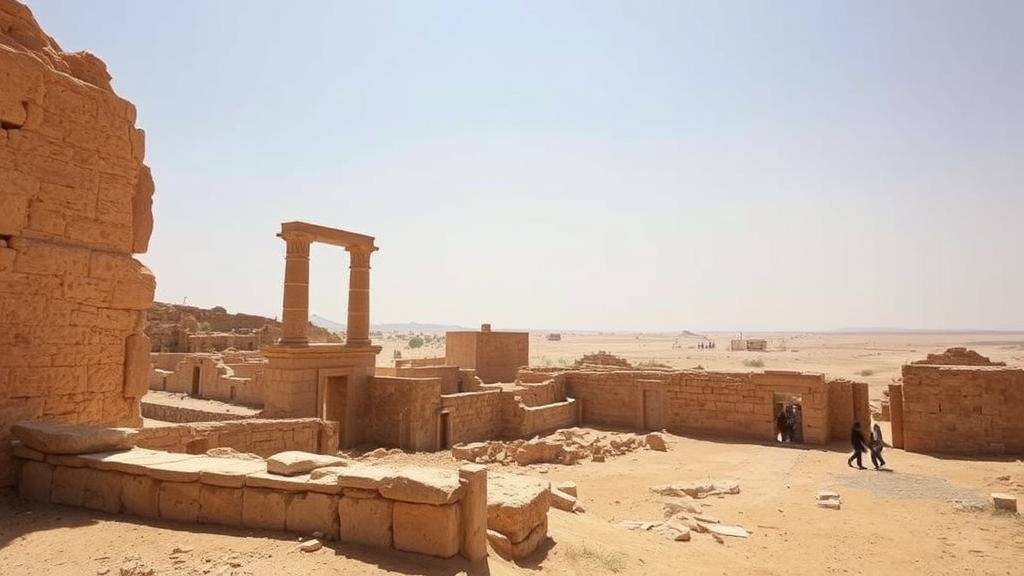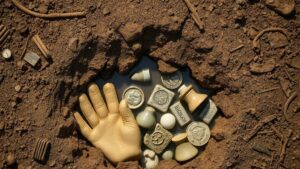Investigating the ruins of Kerma, an ancient city of the Nubian Kingdom.
Investigating the Ruins of Kerma: The Ancient City of the Nubian Kingdom
Kerma, an ancient city situated in present-day Sudan, serves as a crucial archaeological site that sheds light on the rich history of the Nubian Kingdom. Recognized as the first capital of the Kingdom of Kush, the city was founded around 2500 BCE and remained occupied until approximately 1500 BCE. What remains today is a treasure trove of ancient architecture, artifacts, and cultural insights that offer a glimpse into a once-flourishing civilization.
The Historical Context of Kerma
Kerma thrived alongside Egypt during the Middle Kingdom and dominated the region through trade and military power. city is strategically located near the Nile River, which facilitated commerce and cultural exchange with neighboring civilizations. The Nubians were known for their skill in pottery, metalwork, and fortification techniques.
The Kingdom of Kerma reached its zenith approximately between 1750 and 1500 BCE, when it not only rivaled Egypt in terms of wealth and influence but also maintained significant cultural ties with the Egyptians, evident in their art, language, and trade interactions.
Archaeological Discoveries at Kerma
The archaeological site of Kerma, particularly its distinctive Kermans or burial mounds, has yielded significant findings that have helped historians piece together the lifestyles and socio-political structures of its inhabitants. Excavations began in earnest in the early 20th century, revealing numerous artifacts, which include:
- Graves and Burial Practices: The Kermans, which can reach heights of 12 meters, were used for royal burials and are characterized by their unique oval shape. Inside, archaeologists have found elaborate burial goods, including pottery, jewelry, and tools.
- Architectural Structures: The remains of large mudbrick buildings, some believed to serve as administrative centers or temples, showcase the advanced architectural capabilities of the Nubian civilization.
- Pottery and Artifacts: Distinct pottery styles, inscribed bones, and tools reflect the artistic and functional expertise of the Kerma population, demonstrating influences from both local and Egyptian artisans.
Cultural Significance of Kerma
The findings at Kerma represent not only artifacts but also a unique cultural expression that contributes to our understanding of Nubian identity. The city is often described as a melting pot due to its diverse influences from surrounding regions, yet it also showcases distinctly Nubian features that set it apart. For example, the pottery styles from Kerma exhibit bold, geometric designs, which differ significantly from the more organic forms found in Egyptian ceramics.
Also, the evidence of complex societal structures in Kerma, with hierarchical stratifications, calls for a reevaluation of the regions history. belief systems and spiritual practices of the Nubians, visible through various inscriptions and grave offerings, provide valuable insights into their worldview and socio-political organization.
The Challenges of Preservation and Study
Despite its historical significance, Kerma faces threats due to environmental factors and modern development. Soil erosion, climate changes, and urban expansion pose significant challenges to the preservation of this ancient site. Plus, archaeological research is often constrained by funding, political instability, and the need for advanced excavation techniques.
International collaborations involving archaeologists and cultural heritage organizations are crucial in tackling these issues, ensuring that the rich history of Kerma is preserved for future generations.
Real-World Applications and Future Directions
Investigating the ruins of Kerma has wide implications in various disciplines, including archaeology, anthropology, and history. lessons learned from the preservation efforts at this site can inform best practices for managing other archaeological sites worldwide. Also, the findings could play a significant role in tourism, fostering an appreciation for Nubian heritage while also contributing to the local economy.
Future research could focus on:
- Advanced excavation methods that utilize non-invasive technology to map and analyze subsurface artifacts.
- The development of educational programs aimed at raising awareness of Nubian history and its importance in broader historical contexts.
Conclusion
Kerma is not just a reflection of a bygone era; it is a vibrant symbol of a complex and advanced civilization that contributed significantly to human history. Investigating its ruins offers invaluable insights into the dynamics of ancient societies, trade, and culture. As excavations continue and preservation efforts are implemented, Kerma stands poised to teach us more about the intricate tapestry of human civilization.



